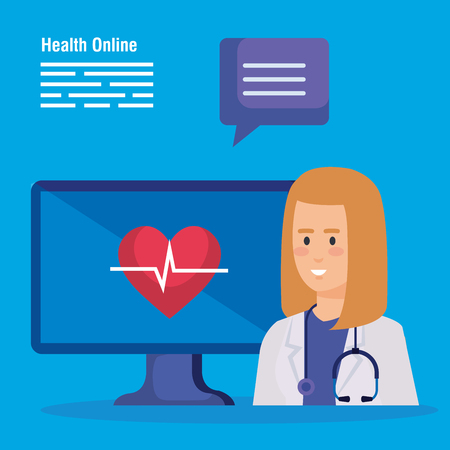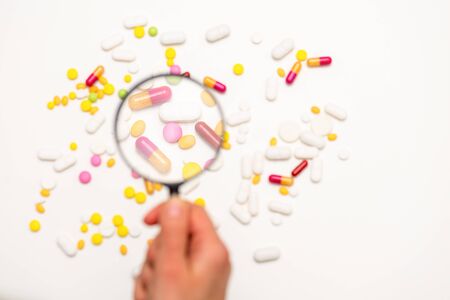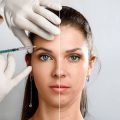Understanding Red Veins: Prevalence and Concerns in the UK
Red veins, often referred to as thread veins or spider veins, are a widespread concern among people living in the UK. While they are generally harmless from a medical perspective, their visible nature can have a considerable impact on self-esteem and daily confidence. In Britain, it is estimated that up to half of adults will notice some form of red vein development at some point in their lives, with prevalence increasing with age. These delicate blood vessels most commonly appear on the face and legs, affecting both men and women, although women tend to experience them more frequently due to hormonal influences. The presence of red veins can be distressing, particularly when they develop in highly visible areas, leading many individuals to feel self-conscious or frustrated. Across different age groups, young adults may worry about appearance-based judgements, while older adults might feel that these changes reflect ageing more rapidly than they wish. Addressing the emotional impact is just as important as understanding the physical causes, making it crucial to explore how genetics and lifestyle choices contribute to red vein formation—and what this means for successful treatment outcomes in the UK context.
Genetic Factors in Red Vein Development
When it comes to red vein formation, genetics play a considerable role in determining one’s susceptibility. If you find yourself noticing visible veins on your face or legs, it is worth considering your family history as part of the bigger picture. Scientific research consistently shows that individuals with close relatives who have experienced red veins are more likely to develop them themselves. This hereditary tendency is rooted in the way certain traits—such as vein wall strength, skin thickness, and even blood vessel elasticity—are passed down through generations.
How Genetics Influence Red Vein Risk
Family history is a crucial indicator when assessing red vein risk. Inherited factors may include weaknesses in vein valves, hormonal profiles, and even connective tissue composition. These elements can make veins more susceptible to dilation and visibility over time, especially when combined with lifestyle triggers like prolonged standing or exposure to extreme temperatures.
Common Inherited Traits Linked to Red Veins
| Inherited Trait | Impact on Red Veins |
|---|---|
| Weak vein valves | Increases likelihood of blood pooling and vein visibility |
| Thin or fair skin | Makes underlying veins more noticeable |
| Connective tissue disorders | Leads to decreased vein support and higher risk of dilation |
| Hormonal sensitivity | Exacerbates vein prominence during hormonal changes (e.g., puberty, pregnancy) |
The Importance of Family Awareness
Understanding your genetic predisposition empowers you to take proactive steps. If red veins run in your family, early intervention and mindful lifestyle choices become especially important. By discussing your family history with your GP or skincare specialist, you can tailor preventative strategies that respect both your genetic background and your individual needs.

3. Lifestyle Influences on Red Vein Appearance
It’s important to recognise that our everyday choices and the environment we live in have a significant impact on the development of red veins, also known as telangiectasia or spider veins. In the UK, certain lifestyle habits and local environmental factors can make people more prone to these visible veins.
Standing for Extended Periods
Many jobs in Britain—whether in retail, healthcare, teaching, or hospitality—require standing for long hours. This sustained pressure on the legs can slow circulation and increase venous pressure, making it more likely for red veins to appear, especially around the ankles and calves. While some standing is unavoidable, taking regular breaks to sit down or elevate your legs can be a gentle yet effective way to ease this pressure and support healthy veins.
Alcohol Consumption
Enjoying a pint at the pub or a glass of wine with friends is a cherished part of British social culture. However, alcohol causes blood vessels to dilate temporarily. With frequent or excessive drinking, this dilation can become persistent, weakening capillary walls and making red veins more visible—especially across the cheeks and nose. Moderation is key; being mindful of how often and how much you drink can help protect your skin’s appearance as well as your overall wellbeing.
Sun Exposure
Although the UK isn’t famous for constant sunshine, Brits know how to make the most of sunny days—whether in gardens, parks, or on holiday abroad. Unfortunately, even brief but intense sun exposure can damage delicate facial capillaries over time. UV rays break down collagen and elastin fibres, causing skin to thin and making red veins more apparent. Wearing broad-spectrum sunscreen and seeking shade during peak hours are simple steps that offer lasting benefits for your skin’s health.
Temperature Variations
The UK climate is famously unpredictable: brisk mornings can quickly turn into warm afternoons, and central heating indoors contrasts with chilly weather outside. These temperature swings cause blood vessels to rapidly expand and contract, which may contribute to capillary fragility in susceptible individuals. Layering clothing appropriately and avoiding extreme temperature changes when possible can gently support your body’s natural resilience.
The Interplay Between Lifestyle and Genetics
While genetic predisposition lays the groundwork for red vein formation, your daily routines and the unique British environment play an equally crucial role. By staying aware of these lifestyle influences—and making conscious choices—you’re not only supporting treatment success but also nurturing confidence in your appearance every day.
4. Navigating Treatment Options Available in Britain
When it comes to addressing red vein formation, individuals in Britain are fortunate to have access to a broad spectrum of treatment options, both through the NHS and private care providers. Understanding which avenue suits your needs best not only improves your chances of success but also empowers you to make informed decisions that align with your lifestyle and genetic predispositions.
Overview of Popular Treatments
In the UK, several evidence-based treatments are commonly recommended for red veins—also known as spider veins or telangiectasia. Below is a concise comparison of the most popular approaches:
| Treatment Type | Description | Availability (NHS/Private) | Suitability |
|---|---|---|---|
| Laser Therapy | Uses focused light to collapse visible veins. | Mainly Private; limited NHS availability for severe cases. | Effective for facial and smaller leg veins; minimal downtime. |
| Sclerotherapy | A solution is injected into the vein causing it to close. | Primarily Private; rarely on NHS unless medical necessity. | Ideal for larger or more persistent leg veins. |
| Lifestyle Adjustments | Involves exercise, diet, avoiding prolonged standing, and skin care. | NHS guidance and support available; self-managed. | Prevents worsening and supports treatment outcomes. |
The Role of the NHS vs. Private Clinics
The NHS typically reserves red vein treatment for cases where symptoms cause significant discomfort or complications, such as ulcers or bleeding. For many, especially when cosmetic improvement is the main goal, private clinics offer advanced options with shorter waiting times and tailored care plans. Its important to consult your GP initially—they can guide you on eligibility for NHS support or refer you to reputable specialists if private care is needed.
Empowering Yourself with Knowledge and Choice
Your unique genetic makeup might mean youre more prone to developing red veins, but combining targeted medical treatments with lifestyle improvements can make a remarkable difference. By understanding what’s available within Britain’s healthcare landscape and seeking professional advice, you place yourself in the strongest position to achieve clear skin and renewed confidence. Remember: taking small proactive steps today can set the foundation for long-term success tomorrow.
5. The Interplay Between Genetics, Lifestyle, and Treatment Success
When considering the management of red veins, it is essential to recognise that both genetic predisposition and lifestyle choices play a profound role in determining not only their formation but also the effectiveness of treatment options. Understanding this dynamic interplay can help set realistic expectations and guide individuals towards long-term success.
Genetic Predisposition: The Starting Point
For many people across the UK, the tendency to develop red veins runs in the family. This genetic influence may mean that even with optimal care, some individuals are more susceptible to developing these visible veins than others. It’s important to approach treatment with compassion for yourself—your genetics do not define your entire journey, but they do provide context for what you might experience.
Lifestyle Choices: Everyday Habits Matter
While genetics lay the groundwork, everyday habits can either mitigate or exacerbate red vein formation. Factors such as prolonged standing or sitting, smoking, excess alcohol consumption, sun exposure without protection, and lack of exercise can all contribute. Conversely, adopting healthy routines—like regular movement, balanced nutrition, wearing compression stockings when appropriate, and protecting your skin from harsh weather—can significantly improve both the appearance of existing veins and your overall vascular health.
Influence on Treatment Outcomes
The synergy between your genes and your lifestyle doesn’t just affect whether red veins appear; it directly impacts how well treatments work and how long their benefits last. For example, someone who addresses lifestyle triggers after undergoing sclerotherapy or laser therapy will likely see longer-lasting results compared to someone who does not make these adjustments. Safety is another consideration—individual risk factors stemming from both hereditary traits and personal habits can alter which treatments are advisable or how you might respond to them.
Managing Expectations: A Personalised Approach
It’s empowering to remember that while you cannot change your genetics, you can certainly influence outcomes through mindful living. When setting expectations for treatment success, consider both these aspects holistically. Collaboration with healthcare professionals who understand your unique background will help tailor a plan that maximises safety and efficacy. In essence, a blend of self-awareness, proactive choices, and expert guidance paves the way for confidence in managing red veins over the long term.
6. Taking Control: Prevention and Self-Care for British Lifestyles
While genetics may lay the foundation, your daily choices can significantly influence whether red veins become a concern—or remain just a possibility. Embracing prevention and self-care suited to British lifestyles empowers you to take charge, no matter your genetic starting point.
Skincare Routines Tailored for the UK Climate
The ever-changing British weather—think brisk winds, rain, and occasional sunshine—calls for a skincare routine that’s both protective and nurturing. Opt for gentle, fragrance-free cleansers and moisturisers with SPF to shield skin from UV exposure, which can exacerbate red vein formation. Incorporating antioxidants like vitamin C serums can also help strengthen capillaries and improve skin resilience.
Smart Wardrobe Choices: More Than Just Fashion
What you wear genuinely matters. Choose loose-fitting clothing to avoid unnecessary pressure on your legs or face, especially if you’re prone to standing or sitting for long periods (hello, London commuters!). Compression stockings are an excellent option if you have a family history of varicose veins or spend hours on your feet at work. In cold months, layer up to protect exposed skin from windburn, which can worsen visible veins.
Building Healthy Habits for Everyday Life
Routine plays a massive role in prevention. Regular physical activity—like brisk walks through your local park or cycling along the canal—improves circulation and reduces vein stress. Elevate your legs when resting, stay hydrated (carry that refillable water bottle!), and limit prolonged sitting or standing when possible. A balanced diet rich in fruits, vegetables, and omega-3 fatty acids supports overall vascular health.
Knowing When to Seek Professional Advice
If home strategies don’t seem effective or you notice sudden changes in vein appearance—such as rapid spreading or discomfort—it’s wise to consult a qualified practitioner. Many NHS clinics offer guidance on vascular health, while private dermatologists can discuss medical treatments like laser therapy tailored for UK skin types. Early intervention not only improves outcomes but helps you regain confidence in your skin’s appearance.
Your Journey to Confidence Starts Today
By blending informed choices with practical routines suited to the British way of life, you’re not just reacting—you’re proactively shaping your future wellbeing. Remember: prevention is always preferable to cure, and small daily steps can make all the difference in keeping those red veins at bay.


